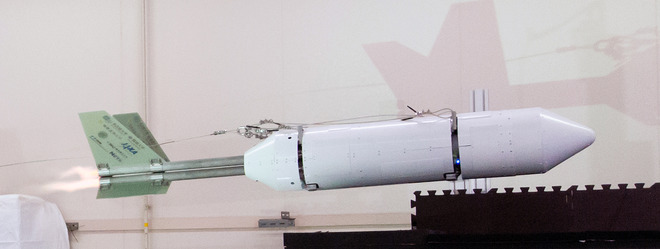
Professor Jiro Kasahara, Assistant Professor Ken Matsuoka at Nagoya University Graduate School of Engineering (Department of Aerospace Engineering), and their coworkers1 succeeded in a world-first flight experiment that only used a Pulse Detonation Rocket Engine (PDRE). 2
Energy is produced in an engine by burning fuel, and it is necessary to burn fuel at a high temperature to improve energetic efficiency. However, when an engine operates at a temperature exceeding a certain limit, it can burn the engine itself. It is essential for engines to keep balance maintaining high temperature to produce energy efficiently and at the same time cooling down to prevent heat damage. Also, existing rocket engines are generally made of a number of components; thus, it is difficult to design an engine flexibly.
Professor Kasahara has been leading the development of a pulse detonation rocket engine globally that is expected to be an innovative engine to solve the above problems in current engines. Detonation is an immensely powerful mechanism that generates impulse waves and produces enormous energy in a short period of time. The combustion speed by detonation is exceptionally fast; thus, once combustion starts the remaining fuel gas prior to burning is severely compressed automatically and results in increasing the internal temperature and pressure. Therefore, PDRE produces high temperatures and pressures by itself without needing peripheral machinery, such as a compressor. Because of this function, PDRE can be simply constructed with fewer components than existing engines and is able to produce large amounts of energy.
When it is applied practically, PDRE can even change the airplane designs because engines can be built from various designs. Also, PDRE has the potential to solve the problem of cooling-down system in engines because it may be possible to take advantage of the time span between one combustion stage and the next, which works as a cooling-down period. PDRE has the same impellent force as existing jet engines and at the same time offers various advantages. It is attracting global attention as a totally-new power source with its potential to bring a fundamental change in developing aerospace vehicles. Professor Kasahara will improve the PDRE safety by extensive experimentation and seek to make it suitable for practical use in the future.
1. Engine: Tomohito Morozumi (University of Tsukuba), system: Shunsuke Takagi (Nagoya University), foundation research: Professor Akiko Matsuo (Keio University), space application: Professor Ikkoh Funaki (JAXA), et al.
2. The research is funded by JAXA/ISAS.
Professor Jiro Kasahara
State of the art technology is making impressive progress in the domain of aerospace engines. Nonetheless, since the last half century we have not seen fundamental changes in its framework and theory. We have cooperated with researchers around the world and aimed to achieve an innovation in aerospace engine. We have also conducted a foundation research on detonation phenomena because hypersonic combustion is very intriguing.
Outlook for the Future
"I aim to make PDRE practical enough to be used in the near future. First, I would like to propagate it to be used as the main engine or an engine for altitude control in spacecrafts. Recently, rotating detonation engine (RDE) has also been actively researched. I hope you would also be intrigued with RDE research, as well as PDRE research."
Message to Young Students
 "For continual research, I believe it is very important to like your subject of research. I have heard that once you make a living by doing what you love, it suddenly become painful and difficult. However, I am certain that the source of strength to overcome the difficulty is out of sheer love for your research subject."
"For continual research, I believe it is very important to like your subject of research. I have heard that once you make a living by doing what you love, it suddenly become painful and difficult. However, I am certain that the source of strength to overcome the difficulty is out of sheer love for your research subject."
Links
Research Information
Professor Jiro Kasahara Information